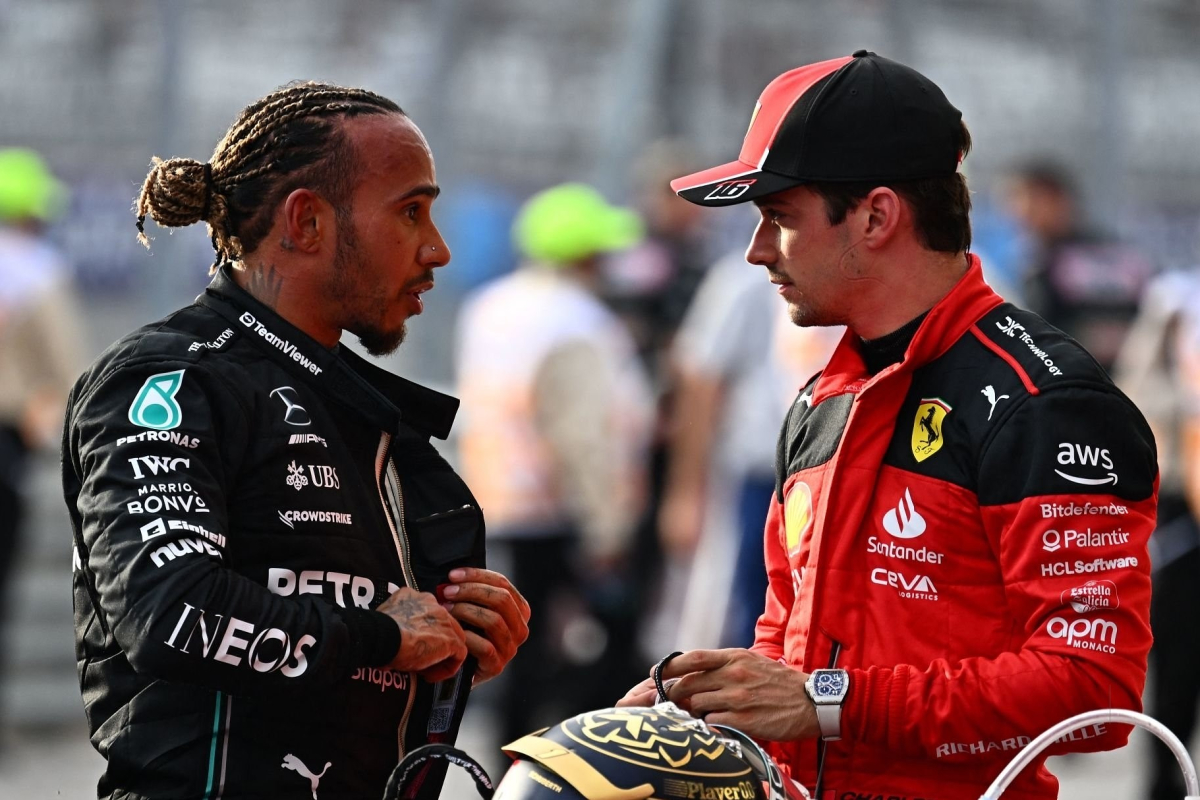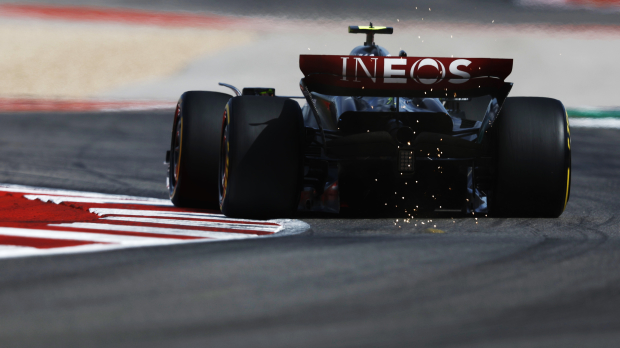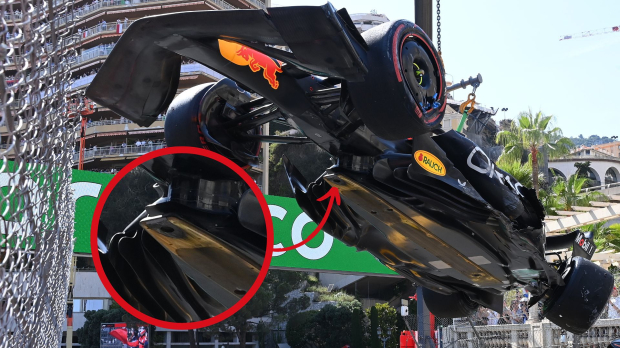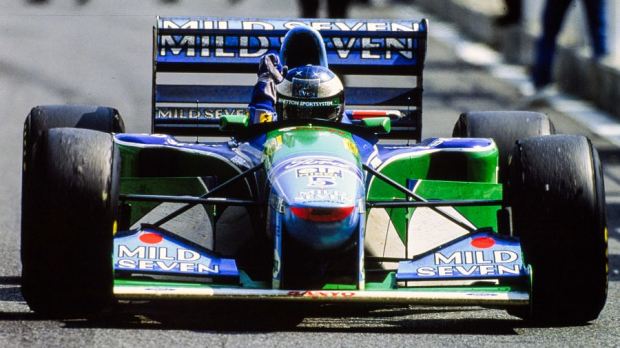
Why USGP was Lewis Hamilton's 'Michael Schumacher' moment
Why USGP was Lewis Hamilton's 'Michael Schumacher' moment

Lewis Hamilton and Charles Leclerc’s controversial disqualification in Austin has raised eyebrows in the F1 paddock. Teams aim to avoid technical infringements at all costs, as they will always be excluded, destroying a weekend’s effort.
The offending issue for Hamilton and Leclerc, excessive wear of the skid block (also known as the rear plank) is a rare reason to be disqualified. So rare, in fact, that there has been only one other recorded incident.
This was more controversial than Hamilton and Leclerc’s disqualification, and almost changed the outcome of a world championship.


Tragedy leads to change
Following the tragic death of Ayrton Senna at the 1994 San Marino Grand Prix, the FIA introduced a raft of changes aimed at improving safety.
The long underfloor wooden plank, sometimes revealed when the bottom of the car is exposed, was introduced at the 1994 German Grand Prix, designed to increase the car ride height, resulting in reduced downforce.
As in modern-day F1, wear is not permitted on the plank. A 10% wear tolerance was allowed in 1994, equating to just one millimetre. The teams had no margin for error, risking catastrophic sporting consequences if liberties were taken.
The impact of the plank was immediate, with Gerhard Berger spinning out at turn one during practice. His Ferrari suffered an engine failure, and he skidded off into the gravel on his own oil. Berger was the first of many to befall this fate since 1994.
Besides this, the plank’s introduction proved uneventful, unusual for an in-season technical regulation change. However, this proved to be the calm before the storm.
Schumacher’s controversial disqualification
Two races later in Belgium, Michael Schumacher and Benetton became the centre of controversy, not for the first time in 1994. Awaiting his appeal following disqualification at the British Grand Prix, he and the team needed to keep out of trouble in Belgium.

Typical weather at Spa Francorchamps ensured Schumacher and fellow title protagonist Damon Hill lost pole position to a young Rubens Barrichello’s Jordan. Still managing to line up P2 and P3 ahead of a dry race, all eyes were on the top two as they attempted to battle for victory.
Schumacher took the lead at the end of the Kemmel straight from Barrichello, resuming his then-customary place in P1. He never looked back, his Benetton B194 seemingly unbeatable at one of F1’s most legendary circuits.
Imperious as he had been all season, he had a quiet afternoon and won the race by thirteen seconds from Hill. Barring a mysterious spin on lap 19, it seemed another simple day at the office for the champion elect.
But in the following hours, Schumacher found himself disqualified. This handed the race result to title rival Hill. While the Briton picked up ten valuable championship points, Schumacher saw a huge chunk of his title lead suddenly disappear.
Excuses wearing thin
So why had Schumacher been disqualified? The FIA, as usual, had inspected all cars after the race to ensure they met post-race regulations. However, an issue had been found on Schumacher’s plank.
The Benetton’s skid block showed signs of excessive wear well beyond the one-millimetre tolerance and was now undersized. This meant the team had run the car too close to the ground, gaining a downforce advantage.
High downforce is critical at Spa’s fast-flowing corners, so the implications on the car’s performance were obvious. The Benetton, already one of F1’s all-time great cars, became illegally unbeatable.
Benetton attempted to explain that the wear was caused by Schumacher’s spin on lap 19. The stewards, however, swiftly dismissed this excuse. The wear patterns of the plank in their eyes did not match this explanation. In a scathing statement, they said: “The stewards concluded that not one of the defences offered is acceptable.”
To make matters worse, Schumacher’s appeal against his British Grand Prix disqualification failed. The FIA opted to make an example of the German, and he found himself on the sidelines for the next two races. He would go on to win the title by a single point in the year's final race in Adelaide, salvaging his championship.
History not repeating itself
It has taken almost thirty years for a plank disqualification to rear its head, which is remarkable. It is a testament to the attention to detail from all F1 teams since 1994.
Schumacher and Benetton attempted to explain away their disqualification by blaming a single dramatic spin. This was never going to work. The weekend format played out as normal for the era, with multiple practice sessions, two qualifying sessions and a morning warm-up before the race. Schumacher’s car would have been checked after every session.
Hamilton and Leclerc’s disqualification is different. They had raced on a bumpy track, with only one practice session to finalise set up due to the weekend’s sprint format. The stewards themselves admitted this in their statement.
A post-race disqualification is a disaster and cannot be sugar-coated. But Schumacher’s 1994 Belgian Grand Prix exclusion feels cheekier than Hamilton and Leclerc’s in Austin. While they suffered from excessive wear likely caused by the sprint format, Schumacher and Benetton's excuses wore too thin. For that reason, it will always be one of the most controversial exclusions in F1 history.
Related news

Marko declares which F1 Grand Prix was Verstappen's 'toughest'

Leclerc once again left 'disappointed' by Ferrari

Norris and McLaren TEASE Hamilton after US Grand Prix

Mercedes make HUGE 2024 announcement for champion driver
Most read

FIA take action after Verstappen track limits mishap

F1 News Today: FIA make changes as Mercedes receive double penalty and Horner curses bad luck

Stroll issues Alonso Aston Martin contract verdict

Red Bull to replace driver at Abu Dhabi Grand Prix

Horner takes aim at Kravitz with savage jibe at Sky Sports pundit
F1 Standings

Drivers
- Charles Leclerc
- Carlos Sainz
- Lando Norris
- Oscar Piastri
- Pierre Gasly
- Esteban Ocon
- Sergio Pérez
- Max Verstappen
- Alexander Albon
- Logan Sargeant
- Lewis Hamilton
- George Russell
- Nico Hülkenberg
- Kevin Magnussen
- Fernando Alonso
- Lance Stroll
- Valtteri Bottas
- Zhou Guanyu
- Nyck De Vries
- Liam Lawson
- Daniel Ricciardo
- Yuki Tsunoda
Races
-
 Gulf Air Grand Prix of Bahrain 2023
Gulf Air Grand Prix of Bahrain 2023
-
 Saudi Arabian Grand Prix 2023
Saudi Arabian Grand Prix 2023
-
 Grand Prix of Australia 2023
Grand Prix of Australia 2023
-
 Grand Prix of China 2023
Grand Prix of China 2023
-
 Grand Prix of Azerbaijan 2023
Grand Prix of Azerbaijan 2023
-
 Miami Grand Prix 2023
Miami Grand Prix 2023
-
 Qatar Airways Gran Premio Del Made In Italy E Dell'emilia Romagna 2023
Qatar Airways Gran Premio Del Made In Italy E Dell'emilia Romagna 2023
-
 Grand Prix of Monaco 2023
Grand Prix of Monaco 2023
-
 AWS Gran Premio de España 2023
AWS Gran Premio de España 2023
-
 Grand Prix du Canada 2023
Grand Prix du Canada 2023
-
 Grand Prix of Austria 2023
Grand Prix of Austria 2023
-
 Aramco Grand Prix of Great Britain 2023
Aramco Grand Prix of Great Britain 2023
-
 Grand Prix of Hungary 2023
Grand Prix of Hungary 2023
-
 Grand Prix of Belgium 2023
Grand Prix of Belgium 2023
-
 Heineken Dutch Grand Prix 2023
Heineken Dutch Grand Prix 2023
-
 Grand Prix of Italy 2023
Grand Prix of Italy 2023
-
 Grand Prix of Singapore 2023
Grand Prix of Singapore 2023
-
 Grand Prix of Japan 2023
Grand Prix of Japan 2023
-
 Qatar Grand Prix 2023
Qatar Grand Prix 2023
-
 Grand Prix of the United States 2023
Grand Prix of the United States 2023
-
 Gran Premio de la Ciudad de Mexico 2023
Gran Premio de la Ciudad de Mexico 2023
-
 Rolex Grande Prêmio de São Paulo 2023
Rolex Grande Prêmio de São Paulo 2023
-
 Heineken Silver Las Vegas Grand Prix 2023
Heineken Silver Las Vegas Grand Prix 2023
-
 Grand Prix of Abu Dhabi 2023
Grand Prix of Abu Dhabi 2023
About GPFans
GPFans is a multi-platform, multi-language brand dedicated to Formula One coverage. We bring you all the ins and outs of the sport, 24/7, everything from up-to-the-minute news and features to the latest viral stories and clips.We believe that a new generation of exciting, outspoken drivers will make F1 more popular than ever before, and we want to give our users access to as much of their heroes as possible, on and off the track. From Lewis Hamilton to Max Verstappen, Daniel Ricciardo to Sebastian Vettel, we provide in-depth analysis of every every Grand Prix in the season, from Australia to Abu Dhabi.
With Formula One under the new ownership of Liberty Media, how the sport is being covered is evolving, and GPFans will look to be at the heart of this progression into new media, as one of the fastest-growing sites covering the king of motorsports.
Follow us on your favorite social media channel
Corporate & Media
 Innovatieweg 20C
Innovatieweg 20C7007 CD, Doetinchem, Netherlands
+31645516860












 Gulf Air Grand Prix of Bahrain 2023
Gulf Air Grand Prix of Bahrain 2023  Saudi Arabian Grand Prix 2023
Saudi Arabian Grand Prix 2023  Grand Prix of Australia 2023
Grand Prix of Australia 2023  Grand Prix of China 2023
Grand Prix of China 2023  Grand Prix of Azerbaijan 2023
Grand Prix of Azerbaijan 2023  Miami Grand Prix 2023
Miami Grand Prix 2023  Qatar Airways Gran Premio Del Made In Italy E Dell'emilia Romagna 2023
Qatar Airways Gran Premio Del Made In Italy E Dell'emilia Romagna 2023  Grand Prix of Monaco 2023
Grand Prix of Monaco 2023  AWS Gran Premio de España 2023
AWS Gran Premio de España 2023  Grand Prix du Canada 2023
Grand Prix du Canada 2023  Grand Prix of Austria 2023
Grand Prix of Austria 2023  Aramco Grand Prix of Great Britain 2023
Aramco Grand Prix of Great Britain 2023  Grand Prix of Hungary 2023
Grand Prix of Hungary 2023  Grand Prix of Belgium 2023
Grand Prix of Belgium 2023  Heineken Dutch Grand Prix 2023
Heineken Dutch Grand Prix 2023  Grand Prix of Singapore 2023
Grand Prix of Singapore 2023  Grand Prix of Japan 2023
Grand Prix of Japan 2023  Qatar Grand Prix 2023
Qatar Grand Prix 2023  Gran Premio de la Ciudad de Mexico 2023
Gran Premio de la Ciudad de Mexico 2023  Rolex Grande Prêmio de São Paulo 2023
Rolex Grande Prêmio de São Paulo 2023  Grand Prix of Abu Dhabi 2023
Grand Prix of Abu Dhabi 2023